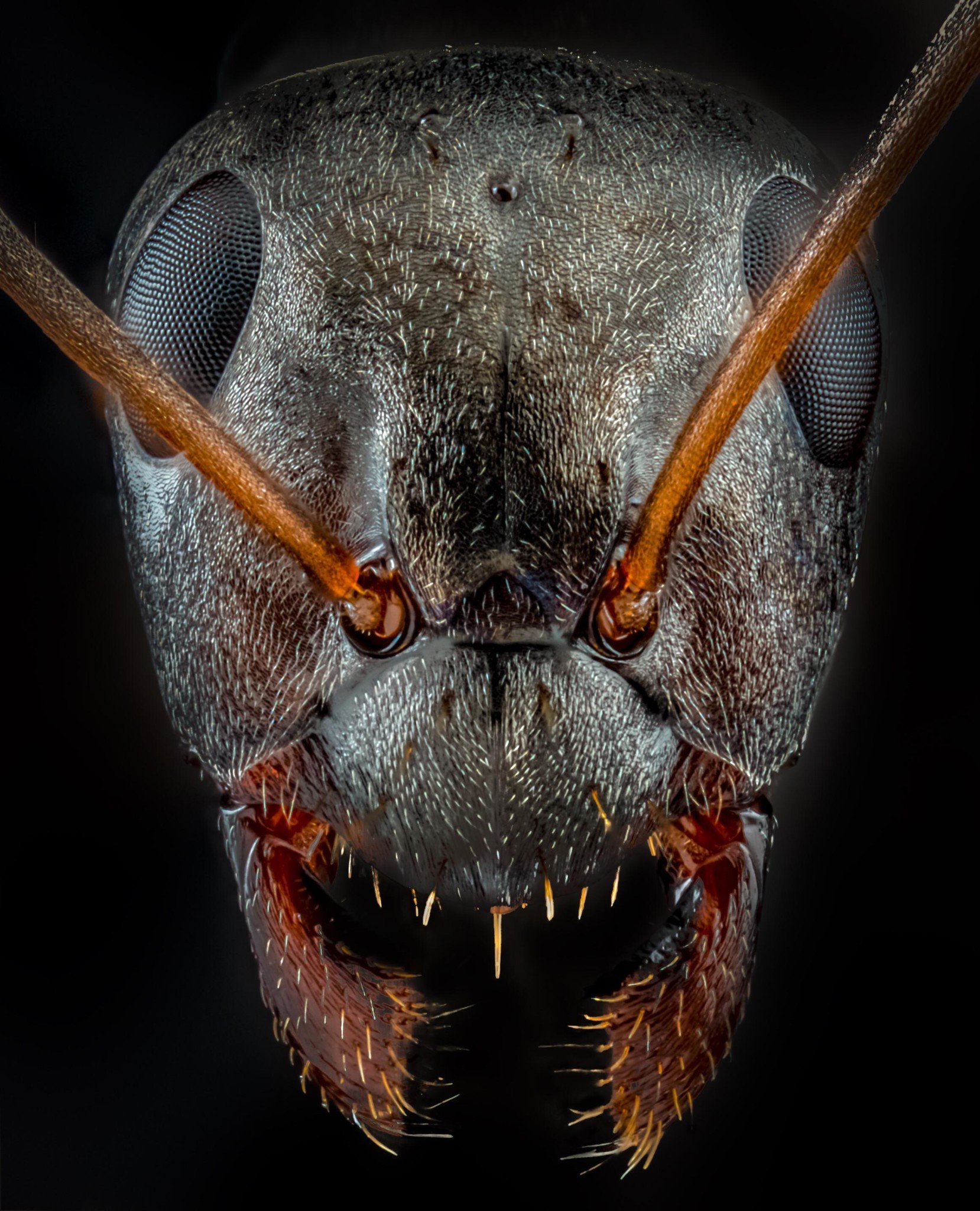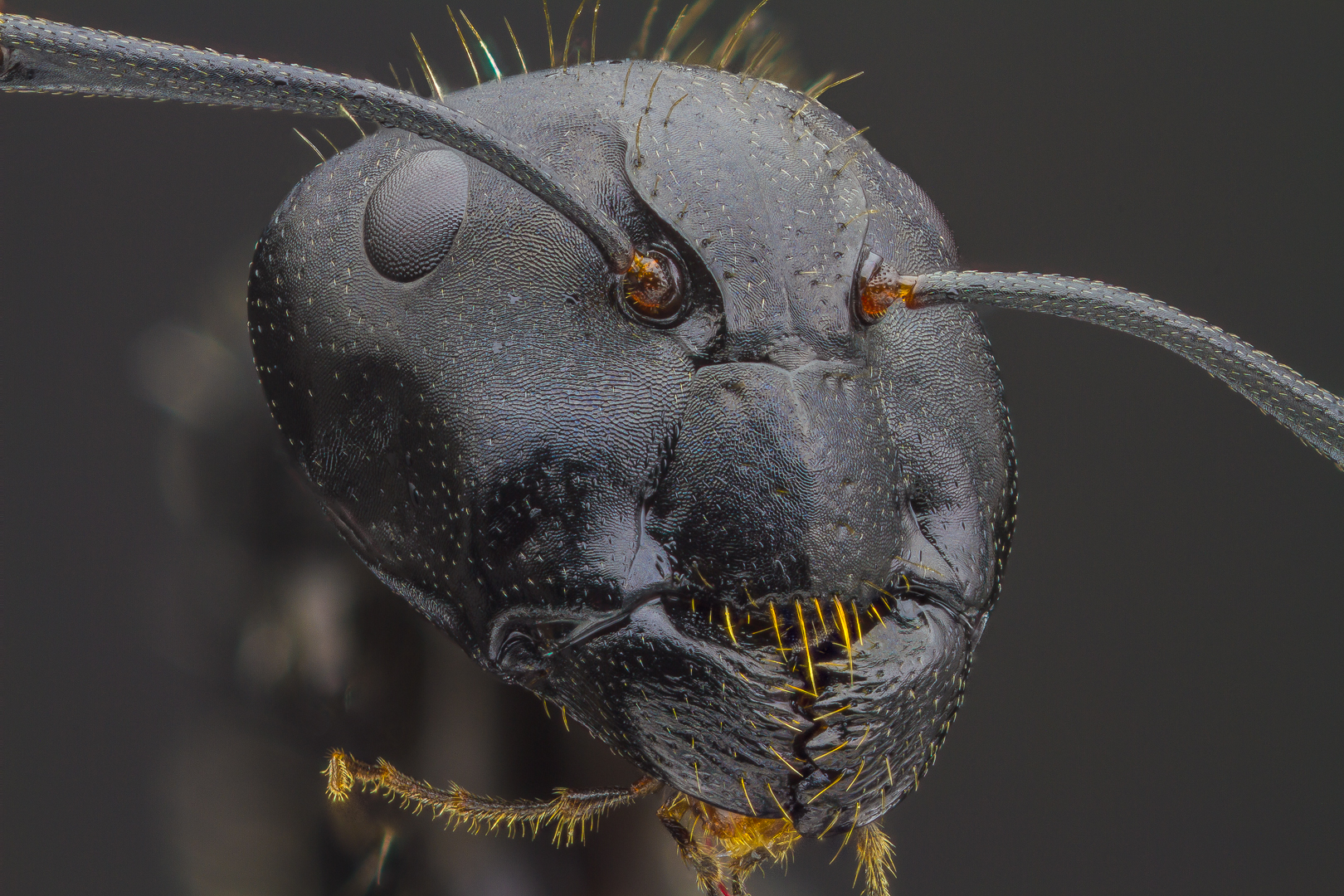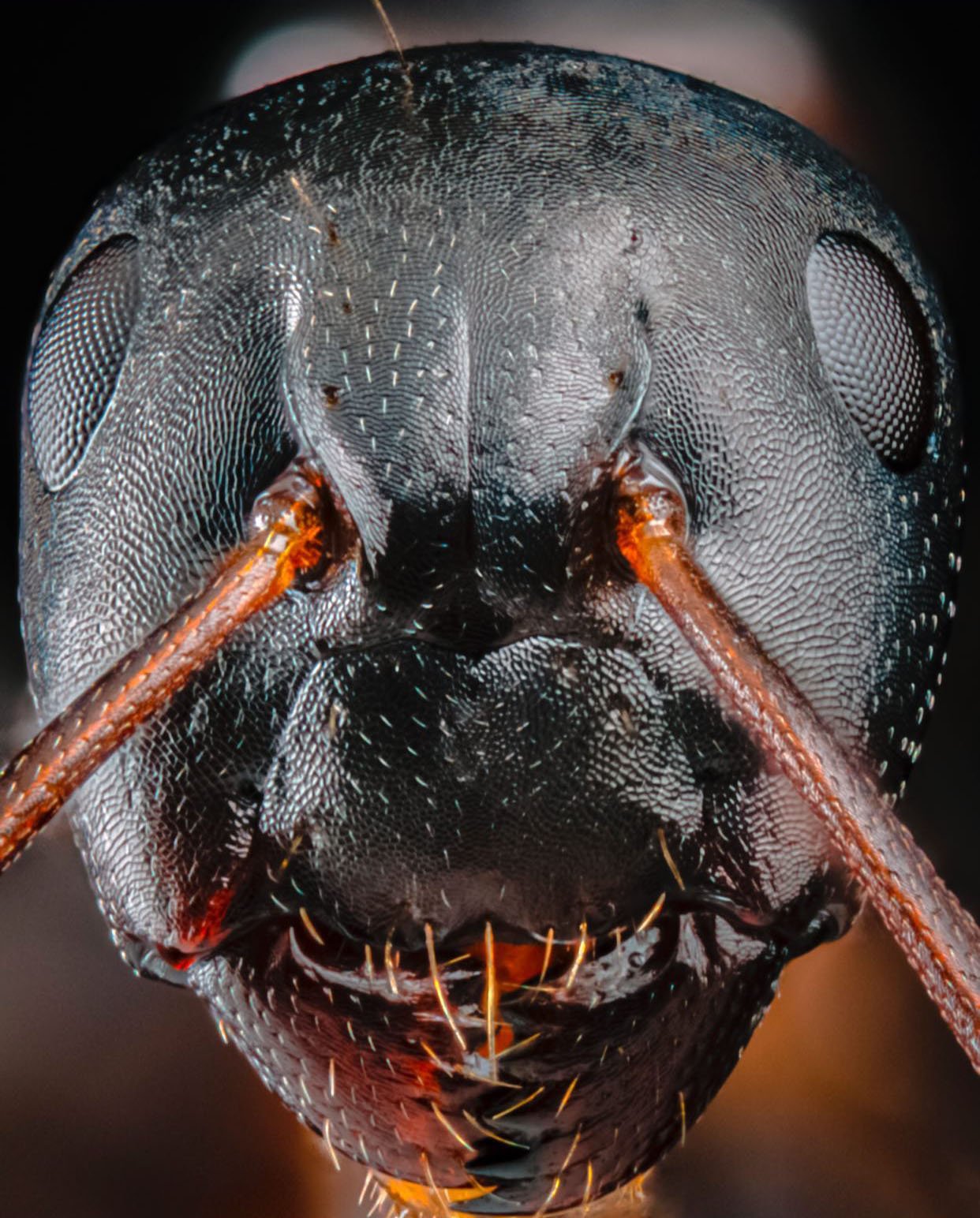Ever peered into the microscopic world and wondered what lurks within? Prepare to have your perception of the familiar, and perhaps your comfort levels, challenged by the astonishing reality hidden in plain sight: the face of an ant.
For many, the thought conjures images of buzzing insects and picnic raids. But a recent surge in macro photography, particularly the work showcased in the Nikon Small World Photomicrography Competition, has revealed a world of intricate detail and unexpected beauty. Forget the simple black dots; these images are not mere depictions of insects, but a gateway into a realm of otherworldly complexity. A single ant face, magnified many times over, can be far more compelling, and far more disturbing, than anything the most imaginative horror movie director could conjure. The stark realism and intricate details offered by macro photography are a perfect showcase of nature's artistry.
| Feature | Description |
|---|---|
| Subject | Ants (various species) |
| Focus | Detailed macro photography of ant faces |
| Technique | Photomicrography, use of extension tubes to achieve high magnification |
| Notable Examples | Award-winning images from the Nikon Small World Photomicrography Competition (2022) |
| Key Findings (Based on Visuals) |
|
| Potential Practical Benefits (Speculated) |
|
| Inspiration |
|
| Artists / Photographers |
|
| Related Fields |
|
| Website for Further Information | Nikon Small World |
The images, often captured using techniques like photomicrography and extension tubes, reveal that the ants we casually observe, often without a second thought, possess facial structures that are as varied as they are compelling. Scientists, using advanced imaging techniques, have meticulously studied over 11,000 photos of ants' faces to understand how these tiny creatures have evolved and adapted to different environments. The results are not only visually stunning, but they are also offering insights into the practical benefits offered by these unique facial patterns and textures, such as potential for protection, absorption, and communication.
The 2022 Nikon Small World Photomicrography Competition, a celebrated showcase of microscopic photography, included images that not only captured the attention of experts but were also shared widely across social media platforms. Such images, depicting the intricate features of ants, serve as a reminder that extraordinary beauty can be found in the most unexpected places. This kind of macro photography, with its extreme close-ups, opens up an entire world of visual detail.
One particular photograph, honored as an image of distinction in the competition, takes the viewer into a world that resembles science fiction. The textures and patterns of the ant's face, brought to life with remarkable clarity, become objects of intense fascination. The details captured in this particular portrait are reminiscent of those found in images taken by Coogler. His approach, characterized by the hyper-distinct capture of the ant's face and antennae is a reminder of the capabilities of macro photography to showcase the minutiae of the natural world.
These images are not merely about aesthetics; they offer a window into the complex world of insect biology. The meticulous details the mandibles, antennae, and even the often-overlooked placement of the eyes (the red dots often seen in images are not the ant's actual eyes, but rather other features) - contribute to a more comprehensive understanding of how these creatures function and thrive. The fact that such detail is visible and accessible to the casual observer is one of the most remarkable facets of this kind of photography.
The visual power of these photographs has also drawn comparisons to other forms of art. Some observers have compared the ant face to a mask from a horror movie, while others see them as akin to the artwork titled 'Ant Face,' a piece created by Salvador Dal during 1936-1937, which is an exemplary representation of the surrealist movement. The intense close-up shots have also been compared to the work of Coogler who uses macro lenses, to capture every nook and cranny of these ants.
The appeal of ant face photography extends beyond the scientific realm, capturing the attention of those with an interest in nature, art, and the uncanny. The work of those who use macro lenses provides a new perspective on the world, offering an opportunity to appreciate the complexity and beauty of the natural world. The impact of these images on social media suggests that these photographs have a broad appeal.
The beauty of the ant face photographs can often be found in the unexpected. The stark realism challenges preconceived notions of beauty and allows for an appreciation of the unexpected. The combination of artistic precision, technical skill, and scientific insight is, in itself, a compelling example of the power of interdisciplinary work.
These photographs provide a means of understanding these often-overlooked creatures. The images highlight the diverse facial features of various ant species. This visual documentation is part of a larger effort to catalog and study the natural world, as well as allowing others to observe.
The imported fire ant, a species originating from South America, is another example of an insect whose facial features have been captured with exceptional clarity. This species, which has infiltrated several North American states, serves as a reminder of how these images can serve as a tool to study and monitor invasive species.
Observing cancer cells under a microscope offers a fascinating contrast to the study of ant faces. The ability to visualize the microscopic world, whether through macro photography or other methods, allows scientists and researchers to gain insights that would otherwise remain hidden. These methods of observing create a unique view into the workings of nature.
The ability to capture and share such images has democratized access to the microscopic world, inspiring curiosity and prompting a deeper appreciation for the natural world. The impact of this photography on our understanding of the world is undeniable.
While some may see these images as unsettling or even frightening, they also remind us of the intricate beauty hidden in plain sight. The combination of scientific accuracy and artistic skill offers a new way of understanding and appreciating the smallest of creatures.
Photographers are often motivated by the inherent challenge of macro photography, as well as the rich visual variety that ants offer. Their subjects, often easy to find, are also a constant source of inspiration. The faces of the ants represent one aspect of the larger entomological context, providing data to understand the wider complexities of the insect world.
In conclusion, the world of ant face macro photography is a testament to the power of observation, technology, and the endless fascination of the natural world. These images not only reveal the hidden beauty of the tiny but also offer insights into the very structure and function of life itself. The ant face, once a simple insect feature, has become a powerful symbol of wonder and scientific inquiry.


